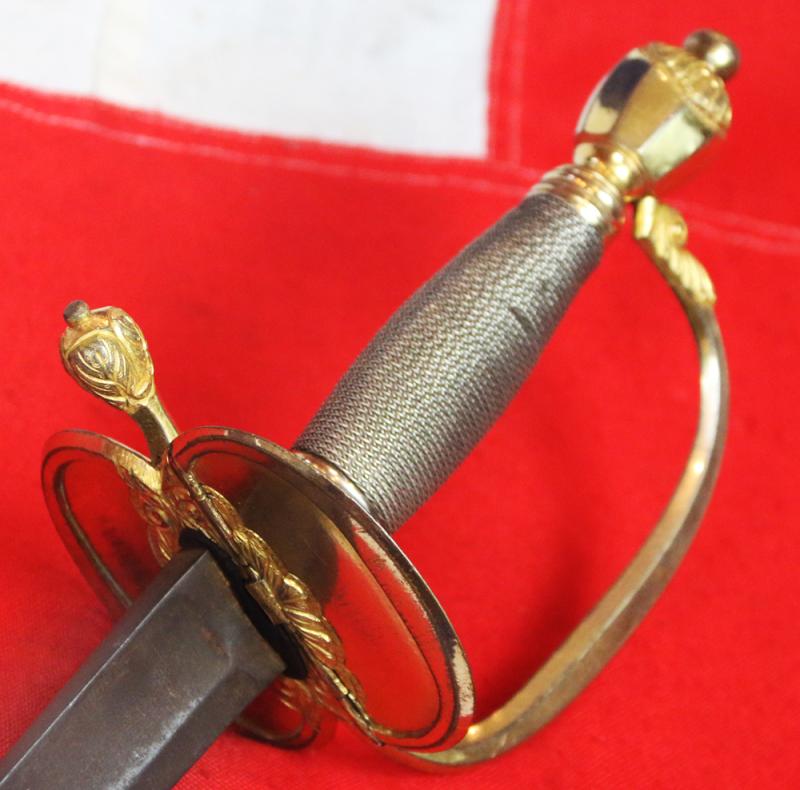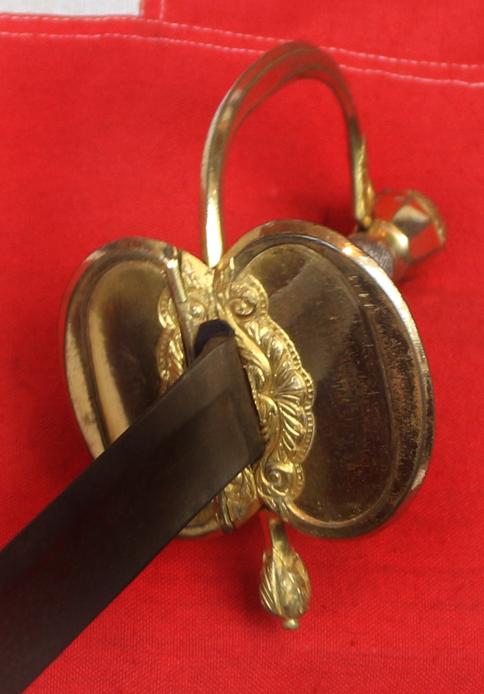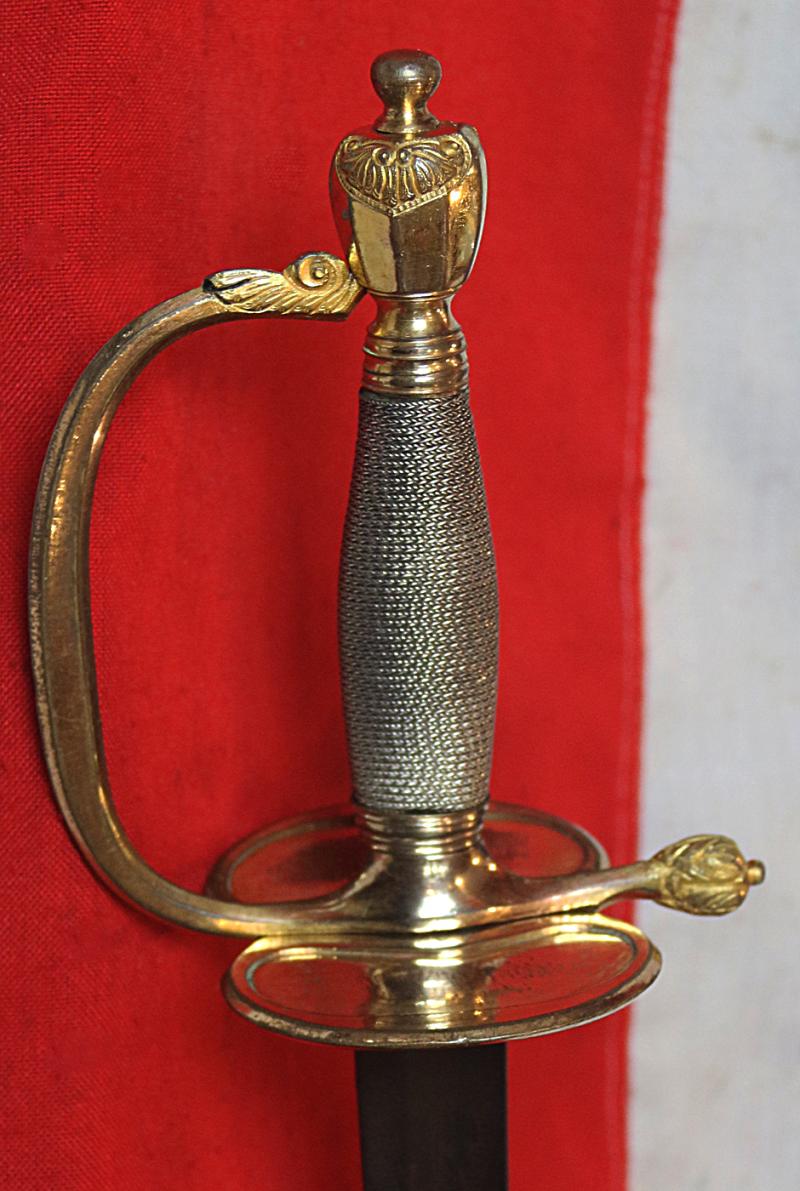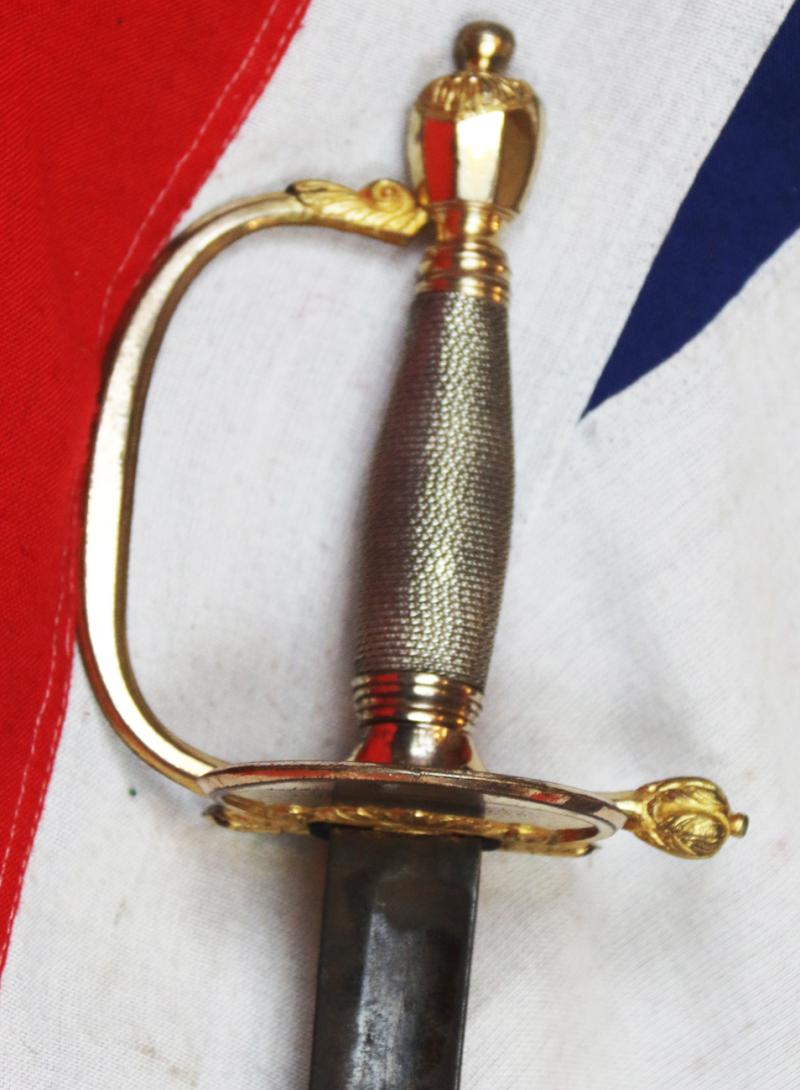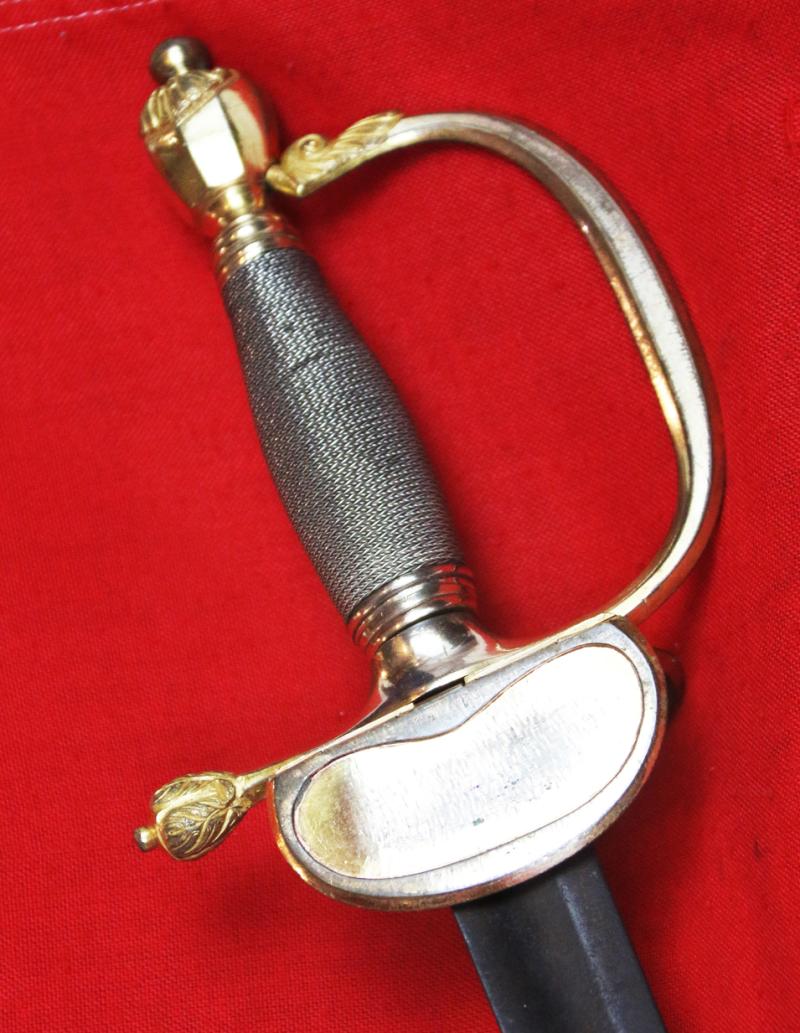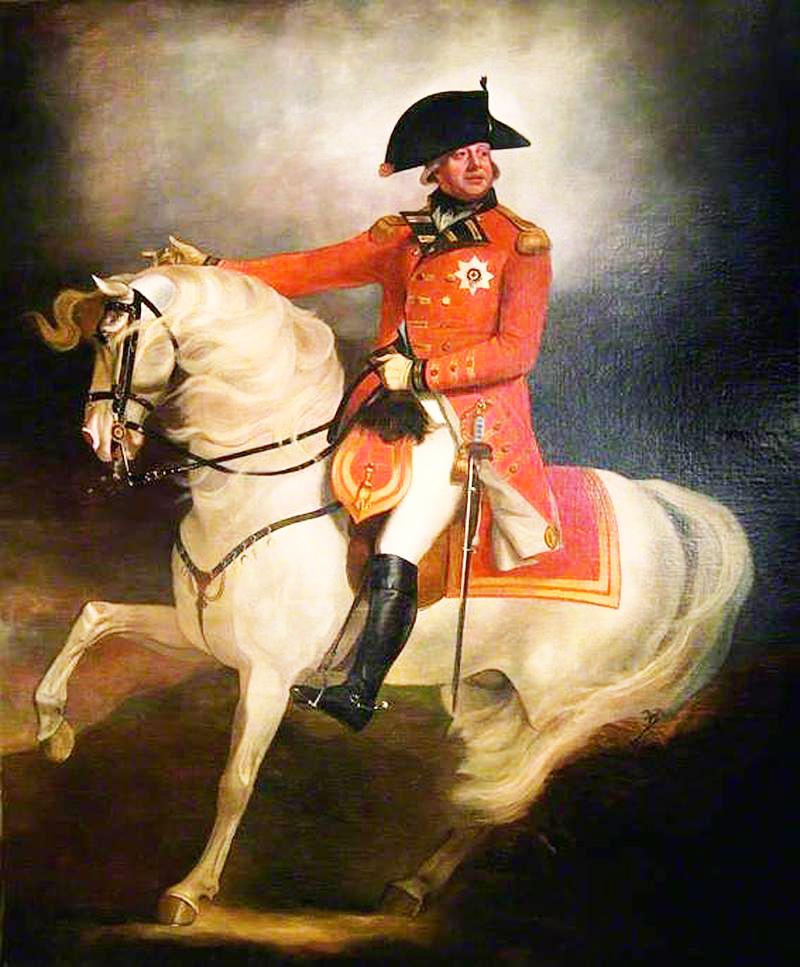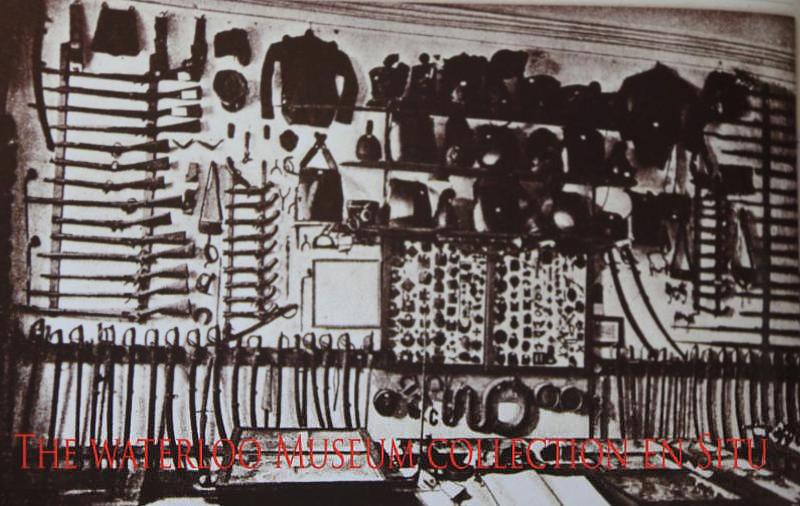A Good 1796 Pattern Infantry Officer's Sword, With Near Mint Hilt of Almost All Its Original Mercurial Gilt and Silver Grip Wire.
Mercurial gilt hilt with double shell fold down guard and silver bound grip, and fully engraved blade with Royal cypher and crest, and some dark blue remaining. From the Napoleonic Wars, the Peninsular war, The War of 1812 in America, then in 1815 at Quatre Bras and Waterloo, and with around 95% of the gilt remaining on the hilt. A simply stunning sword in wonderful condition. British infantry officer's sword of the Napoleonic Wars. The Napoleonic Wars (1803–1815) were a series of major conflicts pitting the French Empire led by Emperor Napoleon I against an array of European powers formed into various coalitions. They revolutionised European armies and played out on an unprecedented scale, mainly owing to the application of modern mass conscription. The wars are traditionally seen as a continuation of the Revolutionary Wars, which broke out in 1792 during the French Revolution. Initially, French power rose quickly as the armies of Napoleon conquered much of Europe. In his military career, Napoleon fought about 60 battles and lost seven, mostly at the end. The great French dominion collapsed rapidly after the disastrous invasion of Russia in 1812. Napoleon was defeated in 1814, and then once more in 1815 at Waterloo after a brief return to power. The Allies then reversed all French gains since the Revolutionary Wars at the Congress of Vienna.
Before a final victory against Napoleon, five of seven coalitions saw defeat at the hands of France. France defeated the first and second coalitions during the French Revolutionary Wars, the third (notably at Austerlitz), the fourth (notably at Jena, Eylau, and Friedland) and the fifth coalition (notably at Wagram) under the leadership of Napoleon. These great victories gave the French Army a sense of invulnerability, especially when it approached Moscow. But after the retreat from Russia, in spite of incomplete victories, France was defeated by the sixth coalition at Leipzig, in the Peninsular War at Vitoria and at the hands of the seventh coalition at Waterloo.
The wars resulted in the dissolution of the Holy Roman Empire and sowed the seeds of nationalism that would lead to the consolidations of Germany and Italy later in the century. Meanwhile, the global Spanish Empire began to unravel as French occupation of Spain weakened Spain's hold over its colonies, providing an opening for nationalist revolutions in Spanish America. As a direct result of the Napoleonic wars, the British Empire became the foremost world power for the next century, thus beginning Pax Britannica.
No consensus exists about when the French Revolutionary Wars ended and the Napoleonic Wars began. An early candidate is 9 November 1799, the date of Bonaparte's coup seizing power in France. However, the most common date is 18 May 1803, when renewed war broke out between Britain and France, ending the one-year-old Peace of Amiens, the only period of general peace in Europe between 1792 and 1814. Most actual fighting ceased following Napoleon's final defeat at Waterloo on 18 June 1815, although skirmishing continued as late as 3 July 1815 at the Battle of Issy. The Second Treaty of Paris officially ended the wars on 20 November 1815. Overall this battle cum dress sword is in fabulous condition, from a large former museum collection of original Napoleonic Battle of Waterloo swords
The last photo in the gallery shows a photograph of one section of the collection in the museum of Waterloo, taken in around 1900, showing all the weapons of Waterloo en situ, including all the protagonists {British, French, Prussian and Belgian muskets, swords, pistols, armour uniforms, etc}. The museum was founded and owned by a veteran of the 7th Hussars that fought at Waterloo .
No scabbard.
Code: 25233
825.00 GBP



